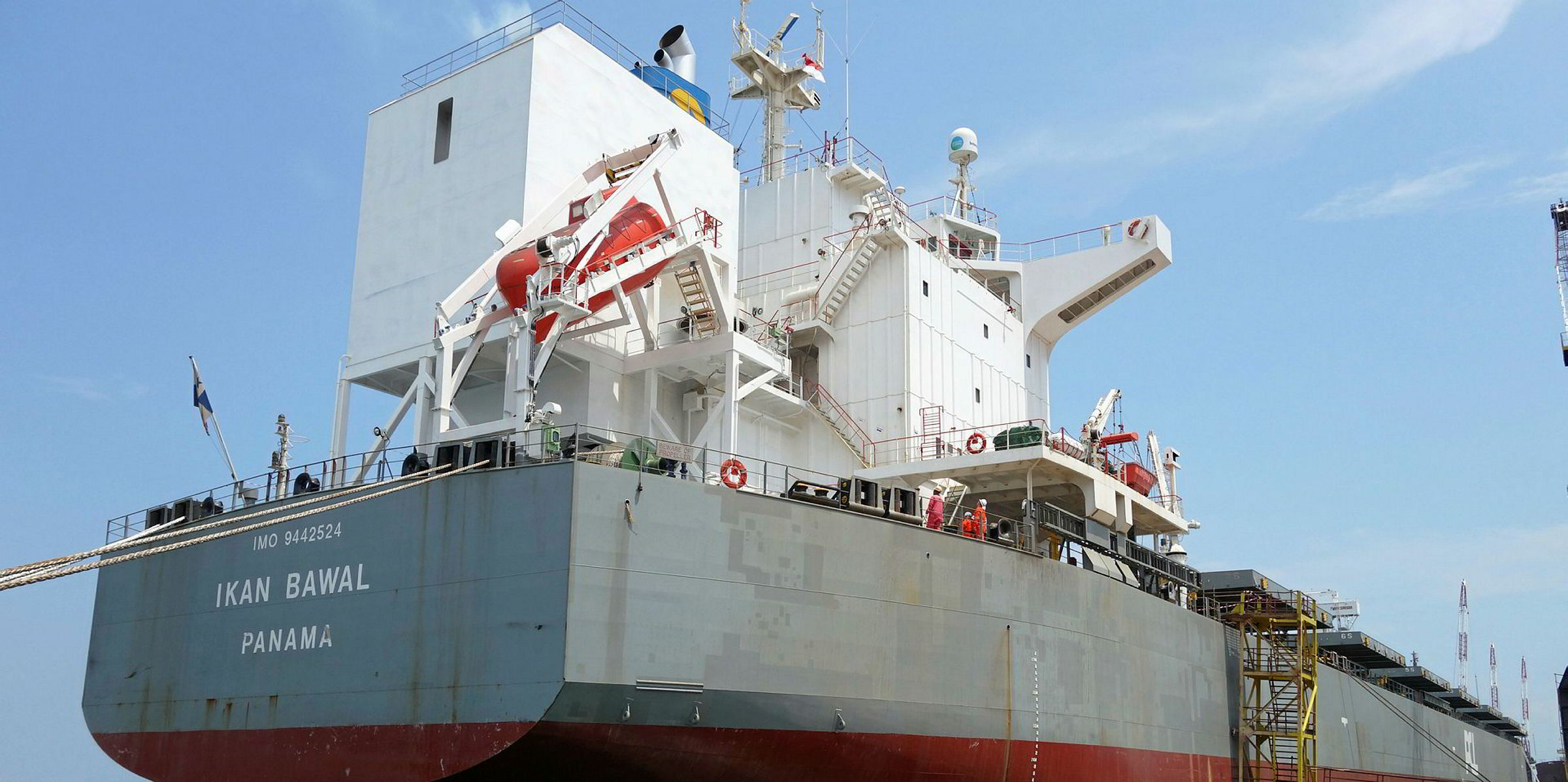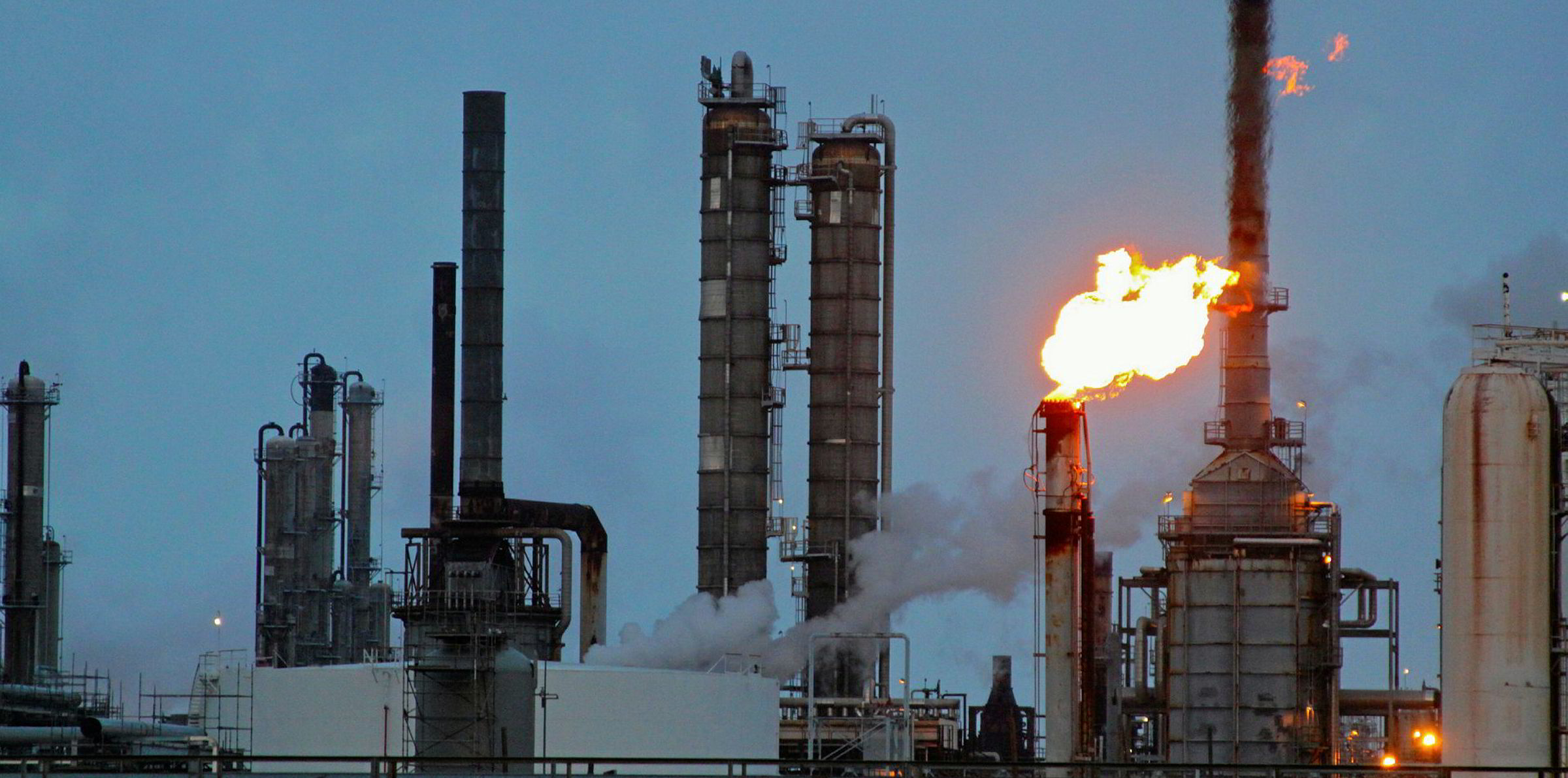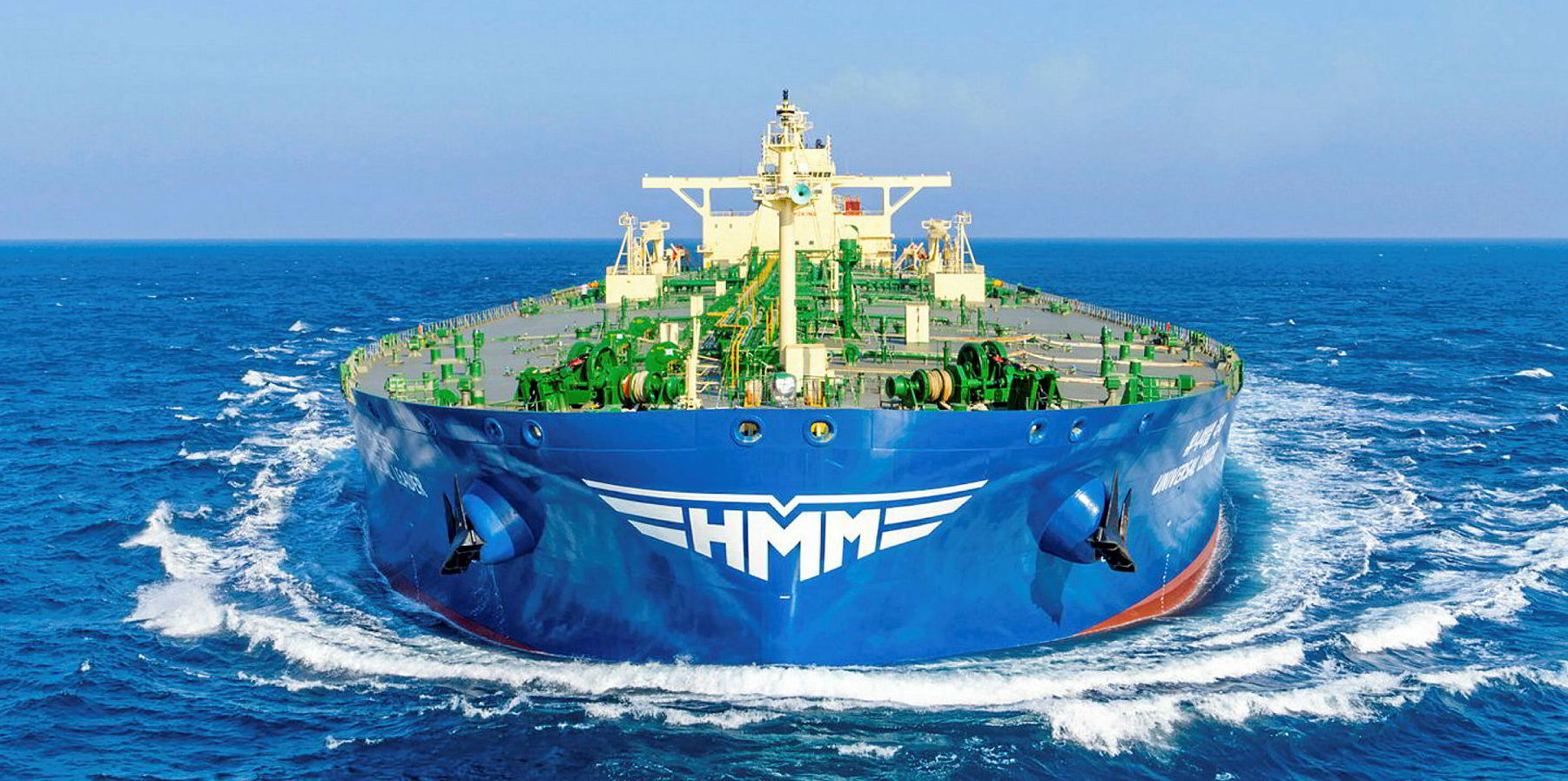Vessels with scrubbers or better fuel efficiency are still expected to reap big benefits from IMO 2020 even though bunker prices have weakened recently in line with crude futures, according to Alphatanker.
Weak bunker prices would prolong the payback time for investments in eco-tonnage or exhaust gas cleaning technology, both of which aimed at reducing overall fuel costs for shipowners.
Assessments made by Ship & Bunker show the average global bunker price is about $370 per tonne this month, its year-to-date low, with oil-demand worries amid trade tension pressuring crude futures.
“Futures curves suggest that fuel oil prices will continue to drop over the remainder of 2019…This has spooked owners of modern eco tankers which have seen the economics of these units, which can burn 35% less fuel than a non-eco vessel, weakened,” says Alphatanker in its weekly note.
However, data provided by the research agency to TradeWinds suggests the IMO 2020 will still lead to wide price spreads between compliant fuels and high-sulphur fuel oil (HSFO), and overall higher fuel costs, justifying the environmental investments.
| Dec-19 | Mar-20 | Jun-20 | Sep-20 | Dec-20 | Mar-21 | Jun-21 | Sep-21 | Dec-21 | |
| MGO/LSFO | 50 | 45 | 30 | 35 | 40 | 40 | 35 | 49 | 50 |
| LSFO/HSFO | 378 | 364 | 366 | 359 | 354 | 345 | 338 | 332 | 330 |
Unit: US dollars per tonne
Source: Alphatanker
Note: Forecasts are based on Rotterdam supply; MGO is assumed to contain maximum 0.1% sulphur
Due to its perceived high compatibility, marine gasoil (MGO) will become the fuel of choice initially when the IMO 2020 rules come into force in January and account for 46% of global bunker demand, Alphatanker predicts.
For supply from Rotterdam, the price of 0.1%-sulphur MGO is to rise to $634 per tonne at end-December from $557 at end-September, according to Alphatanker. The price of 0.5%-sulphur fuel oil, also known as low-sulphur fuel oil (LSFO), is forecast to be $584 per tonne at end-December.
“As marine fuel prices firm…the economics of eco vessels will improve, which suggests that today’s underwhelming economics of such units are just a blip,” says Alphatanker.
On the other hand, Alphatanker estimates less than 2,000 vessels will be equipped with scrubbers by January to continue consumption of HSFO.
“The vast majority of the fleet will be forced to switch to compliant fuel with a sulphur content of less than, or equal to, 0.5%,” says Alphatanker.
“When considering that marine demand accounts for almost half of global HSFO demand, this therefore suggests that, all things being equal, global HSFO demand will crash in early 2020.”
HSFO is expected to drop to $206 per tonne at end-December from $274 at end-September.
“As the spread between compliant and HSFO fuel widens…this will also significantly improve the economics of scrubber-equipped vessels and they could become more attractive for charterers looking to secure tonnage under time charter,” says Alphatanker.
On the other hand, LSFO demand will gradually increase as the fuel become more standardised.
Alphatanker expects LSFO to account for 37% of global bunker demand in 2022, compared with 29% in January 2020.
The early adopters will be the owners of large-sized vessels, which tend to be fuel-thirstier and call at a small number of ports, according to Alphatanker.
“Many owners of non-scrubber equipped VLCC and suezmax tonnage are planning to run [LSFO] since their vessels only call at less than 10 ports during a typical year and thus they can be relatively assured of obtaining [LSFO] in these ports,” Alphatanker says.
“Additionally, considering that large tankers often undertake longer voyages and thus spend an inordinate number of days on the high seas compared to their smaller brethren, their bunker costs account for a larger proportion of their total operating expenditure.”





